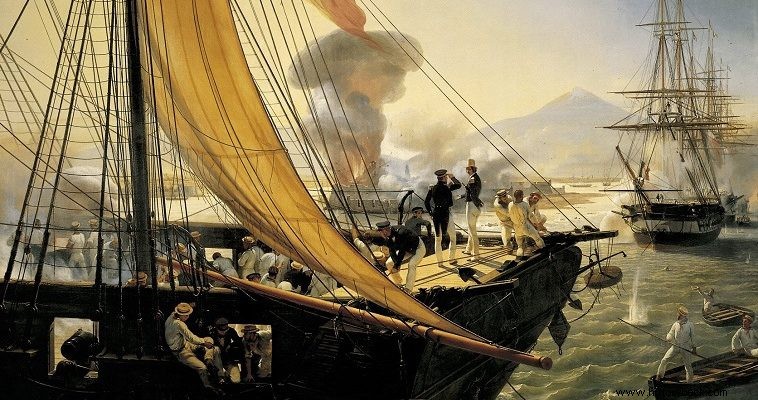
In 1832, the French confectioner Remonde, who lived in Mexico, protested with a letter to his compatriot King Louis-Philippe, writing that his shop near the city of Mexico was looted by Mexicans. He even demanded compensation of 60,000 pesos.
And that time was a time of turmoil in the large Latin American country. Gangs were running rampant and the government was unable to control the situation. On the other hand, Mexico had the USA and Britain as its main trading partners. France was out of nymph and desired to enter…
As for Remonde, the Mexican authorities estimated the damage to his store at 1,000 pesos and refused to pay him the huge amount he was demanding. A corresponding case was the Pacifiko case for Greece, a few years later.
The French did not leave the whole matter unexploited. In fact, they added accusations against the Mexicans. So they remembered the looting of French stores in Mexico in 1828 and the execution of a Frenchman convicted of piracy in 1837. So in 1838 the French government presented a new bill of costs demanding the enormous sum of 3 million French francs at the time (600,000 pesos) as compensation.
Mexican President Anastasio Bustamante of course refused to have his country pay this amount. In response the French sent a flotilla to Mexico under Rear Admiral Charles Boudin with the mission of blocking the Mexican ports and capturing the city of Veracruz.
Boudin's flotilla consisted of four frigates, two corvettes, eight barons and two gunboats. The French attacked Veracruz and fiercely bombarded the fortress there from November 27, 1838, which surrendered. The French then landed 3,000 of their men and after defeating the Mexicans occupied the city on December 5.
Mexico formally declared war on France, but this was probably a move for the price of arms alone, since there was practically nothing else it could do.
But the worst thing for the Mexicans was the exclusion. Mexican smugglers were trying to move goods through Texas , but the Texans slowly curtailed their action fearing French reprisals and the US had sent a ship of their own to reinforce the French blockade.
The French policy of gunboats brought back to the fore the Mexican generalAntonio Lopez de Santa Anna, who fought the French and even lost one of his legs to fire from a French cannon. This fact gradually brought him to power.
Finally the "confectioner's war" ended on March 9, 1839 with British mediation. The French won the 600,000 pesos they demanded, as well as trade privileges in Mexico. However, the Mexicans, although they agreed, never paid this amount. The French emperor Napoleon III relied on non-payment to intervene again in Mexico in 1861.
The "justice" of the gunboats had triumphed. The French had total losses of 32 killed and 60 wounded. The Mexicans suffered about three times as many casualties.
